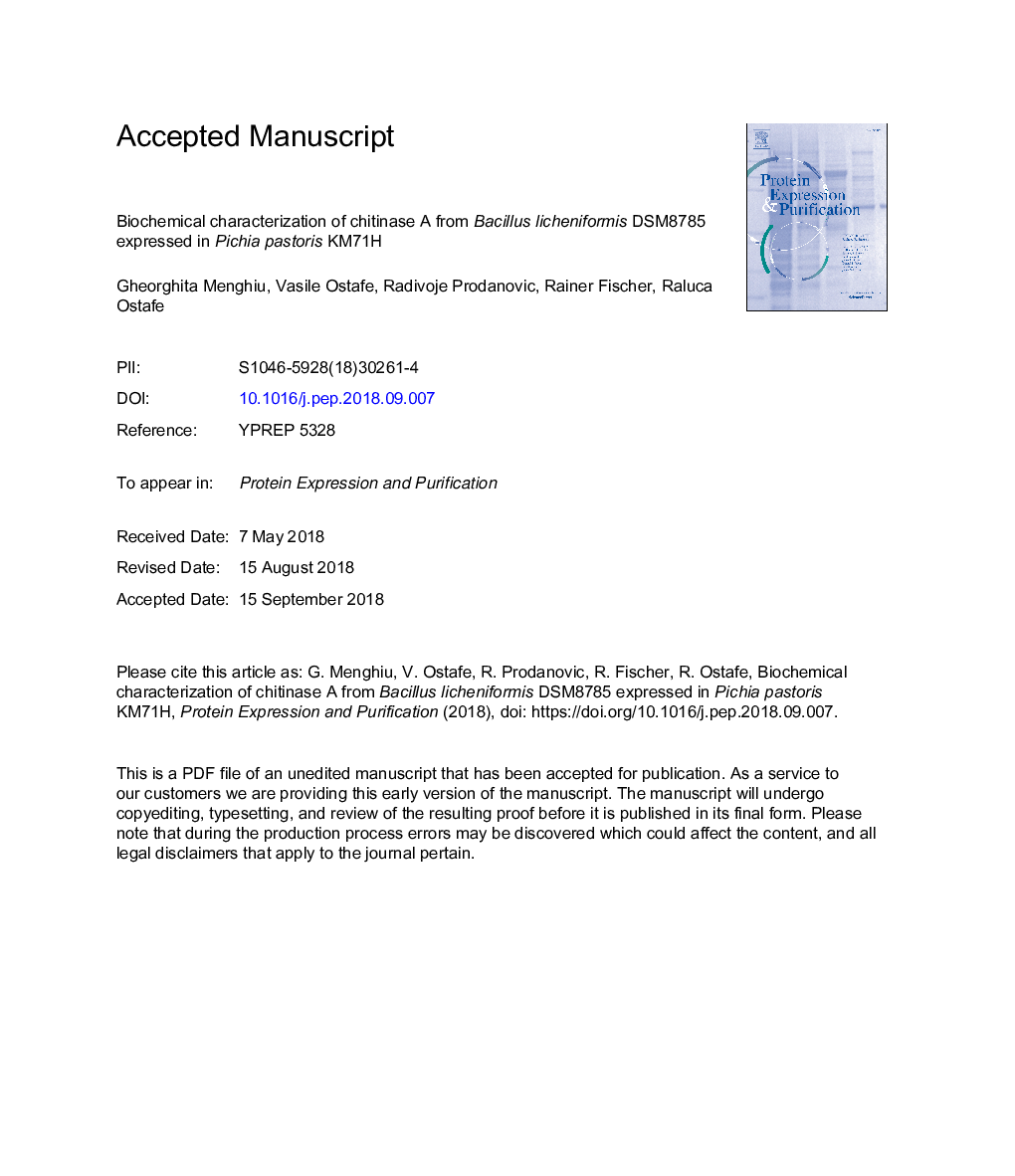| Article ID | Journal | Published Year | Pages | File Type |
|---|---|---|---|---|
| 11019561 | Protein Expression and Purification | 2019 | 27 Pages |
Abstract
Chitin is an abundant biopolymer found mainly in the exoskeleton of crustaceans and insects. The degradation of chitin using chitinases is one way to address the accumulation of chitin waste streams in the environment, and research has therefore focused on the identification, improvement and expression of suitable enzymes. Here we describe the production, purification and characterization of Bacillus licheniformis chitinase A in the Pichia pastoris expression system. Optimal enzyme activity occurred at pH 4.0-5.0 and within the temperature range 50-60â¯Â°C. With colloidal chitin as the substrate, the Km (2.307â¯mM) and Vmax (0.024â¯mMâ¯minâ1) of the enzyme were determined using a 3,5-dinitrosalicylic acid assay. The degradation products of colloidal chitin and hexa-N-acetylchitohexaose were compared by thin-layer chromatography. The activity of the glycosylated enzyme produced in P. pastoris was compared with the in vitro deglycosylated and aglycosylated version produced in Escherichia coli. We showed that the glycosylated chitinase was more active than the deglycosylated and aglycosylated variants.
Keywords
BMMYTetra-N-acetylchitotetraoseDNSDeglycosylationBMGYTLCPBS3,5-dinitrosalicylic acidSDS-PAGESodium dodecyl sulfate polyacrylamide gel electrophoresisbuffered methanol-complex mediumEnzymatic assayPhosphate buffered salineminimal mediumbuffered glycerol-complex mediumN-acetylglucosamineMolecular cloningpolymerase chain reactionPCRthin-layer chromatography
Related Topics
Life Sciences
Biochemistry, Genetics and Molecular Biology
Biochemistry
Authors
Gheorghita Menghiu, Vasile Ostafe, Radivoje Prodanovic, Rainer Fischer, Raluca Ostafe,
